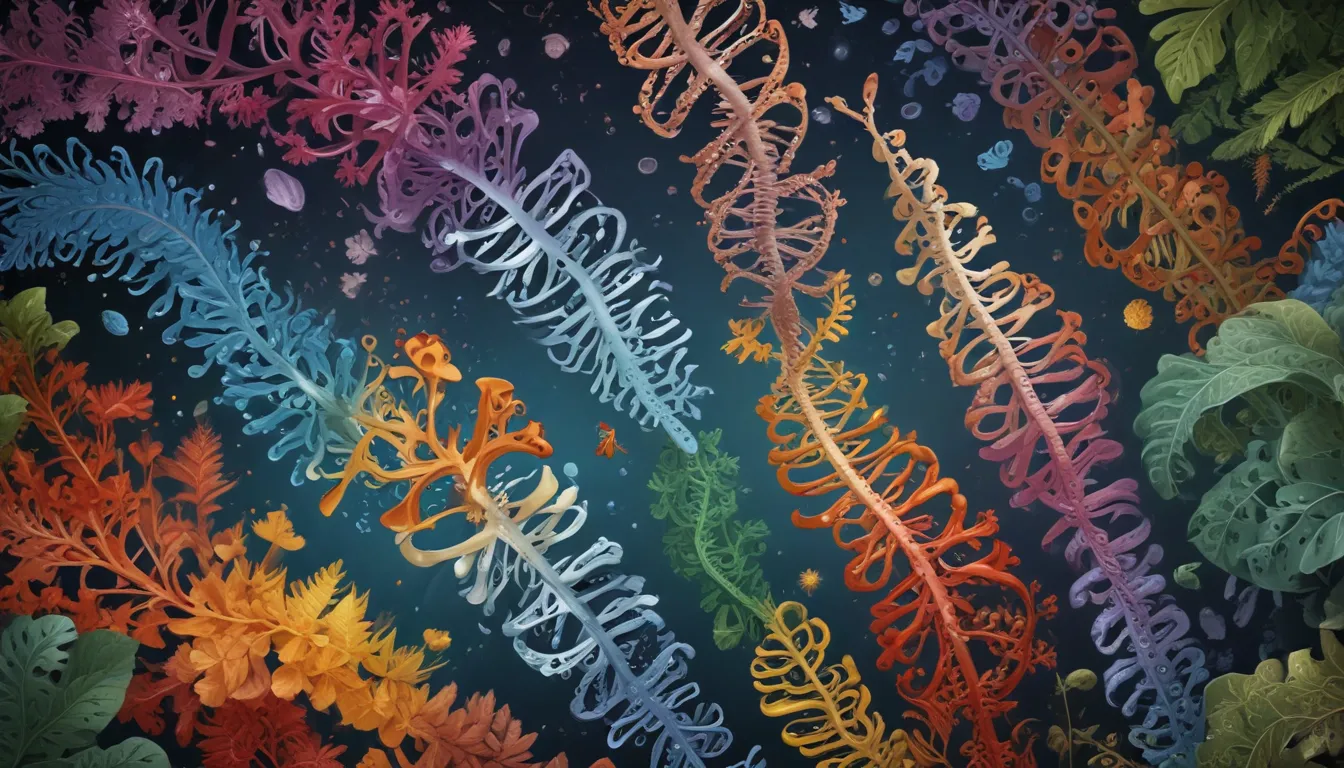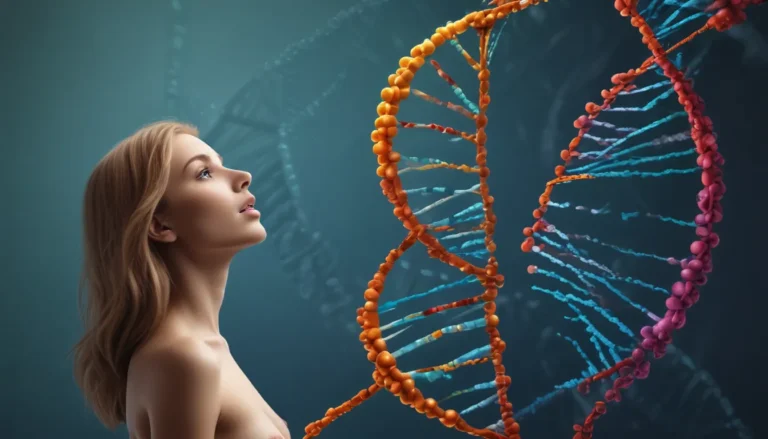A Note About Images: The images used in our articles are for illustration purposes only and may not exactly match the content. They are meant to engage readers, but the text should be relied upon for accurate information.
Welcome to the fascinating world of Mendelian genetics, where the inheritance of traits from one generation to the next is deciphered through the pioneering work of Gregor Mendel. This Austrian monk, through his groundbreaking experiments with pea plants in the 19th century, laid the groundwork for modern genetics and revolutionized our understanding of heredity. In this article, we will delve into nine astonishing facts about Mendelian genetics that will leave you in awe of the wonders of genetic inheritance.
Unveiling the Foundations of Modern Genetics
Mendelian Genetics, named after Gregor Mendel, stands as a cornerstone in the realm of genetics by providing insights into the transmission of traits from one generation to another. This branch of genetics elucidates how genetic traits are inherited and passed down through familial lines, forming the basis for our understanding of heredity.
Decoding Dominant and Recessive Traits
One of the key contributions of Mendelian Genetics is unraveling the concept of dominant and recessive traits in genetic inheritance. According to Mendel’s principles, dominant traits prevail over recessive ones in the presence of both alleles, significantly influencing the portrayal of characteristics in offspring.
Journey into Genetic Inheritance
Mendel’s experiments with pea plants unearthed a profound revelation – traits are inherited in a predictable pattern from parents to offspring. This monumental discovery led to the formulation of the laws of segregation and independent assortment, elucidating how genetic material is distributed during reproduction.
Predicting Genetic Outcomes with Punnett Squares
Punnett squares emerge as an invaluable tool in the realm of genetics, offering a visual representation of genetic crosses to predict the probability of specific trait combinations in offspring. By utilizing this method, researchers and breeders can make informed decisions in selective breeding practices.
Unraveling the Mysteries of Genetic Diseases
Mendelian Genetics plays a pivotal role in unveiling the patterns of inheritance associated with genetic diseases. By studying these inheritance patterns, scientists have been able to identify and comprehend disorders such as cystic fibrosis, sickle cell anemia, and Huntington’s disease, paving the way for advancements in medical research.
Pioneering the Discovery of DNA
Mendel’s seminal work laid the foundation for the study of genetics, ultimately leading to the groundbreaking discovery of DNA as the hereditary material. This watershed moment opened new avenues for genetic research, shedding light on the molecular basis of genetic inheritance.
Challenging Prevailing Theories of Inheritance
In a paradigm-shifting move, Mendelian Genetics challenged the prevailing theory of blending inheritance prevalent during his time. By providing evidence supporting particulate inheritance, where traits are inherited as discrete units, Mendel revolutionized the field of genetics.
Impact on Agriculture and Selective Breeding
The principles of Mendelian Genetics have left a lasting impact on the field of agriculture, enabling breeders to develop crops with desirable traits through a profound understanding of inheritance patterns in plants. This transformative knowledge has led to increased productivity and enhanced agricultural practices.
Guiding Genetic Counseling Practices
The profound insights gained from Mendelian Genetics form the bedrock of genetic counseling practices. Genetic counselors leverage this knowledge to evaluate the risk of genetic disorders within families, offering guidance on family planning, reproductive options, and potential treatments.
As we reflect on the astonishing facts about Mendelian genetics, we are reminded of the enduring legacy of Gregor Mendel’s pioneering work and its far-reaching implications for the field of genetics. From shaping our understanding of inheritance to aiding in medical advancements and agricultural innovations, Mendelian genetics continues to be a guiding light in the realm of genetics.
Conclusion: Illuminating the Path of Genetic Discovery
In conclusion, Mendelian genetics stands as a testament to the power of scientific exploration in unraveling the mysteries of genetic inheritance. Through the foundational work of Gregor Mendel and subsequent research in the field, we have gained invaluable insights into the intricate mechanisms that govern the transmission of traits from one generation to the next.
From dominant and recessive alleles to Punnett squares and genetic diseases, Mendelian genetics serves as a vital compass guiding our exploration of the genetic landscape. As we delve deeper into the complexities of genetic inheritance, we uncover a rich tapestry of knowledge that continues to shape advancements in various scientific fields.
Embark on a journey of discovery as you delve into the realm of Mendelian genetics, where each fact unveils a new layer of understanding in the captivating world of genetic inheritance.
FAQs: Navigating the Path of Genetic Inquiry
-
What is Mendelian genetics?
Mendelian genetics is the study of how genetic traits are passed down from parents to offspring, based on the principles discovered by Gregor Mendel in the 19th century. -
What are dominant and recessive alleles?
Dominant alleles are expressed when present in an individual’s genetic makeup, while recessive alleles are only expressed if both copies are present. Dominant traits override recessive traits in offspring. -
What is independent assortment?
Independent assortment is the concept that alleles for different traits segregate independently during gamete formation, allowing for diverse trait combinations to be inherited. -
How are Punnett squares used in Mendelian genetics?
Punnett squares serve as tools to predict the probability of offspring inheriting specific traits based on parental genetic makeup, providing a visual representation of genetic combinations. -
How has Mendelian genetics contributed to other scientific fields?
Mendelian genetics has made significant contributions to fields such as medicine, agriculture, and evolutionary biology by enhancing our understanding of genetic inheritance patterns and enabling advancements in various domains.
As we embark on a journey of discovery through the realm of Mendelian genetics, each fact serves as a stepping stone in unraveling the intricacies of genetic inheritance. Join us in exploring the captivating world of genetic phenomena beyond Mendel’s classic principles, and unlock the hidden marvels that await in the vast expanse of genetic exploration.
Remember, the quest for knowledge is a never-ending adventure, and in the realm of genetics, the possibilities are as vast as the mysteries waiting to be unraveled. So, let’s embark on this enlightening voyage together, as we navigate the fascinating landscape of Mendelian genetics and unveil the hidden treasures of genetic inheritance.






